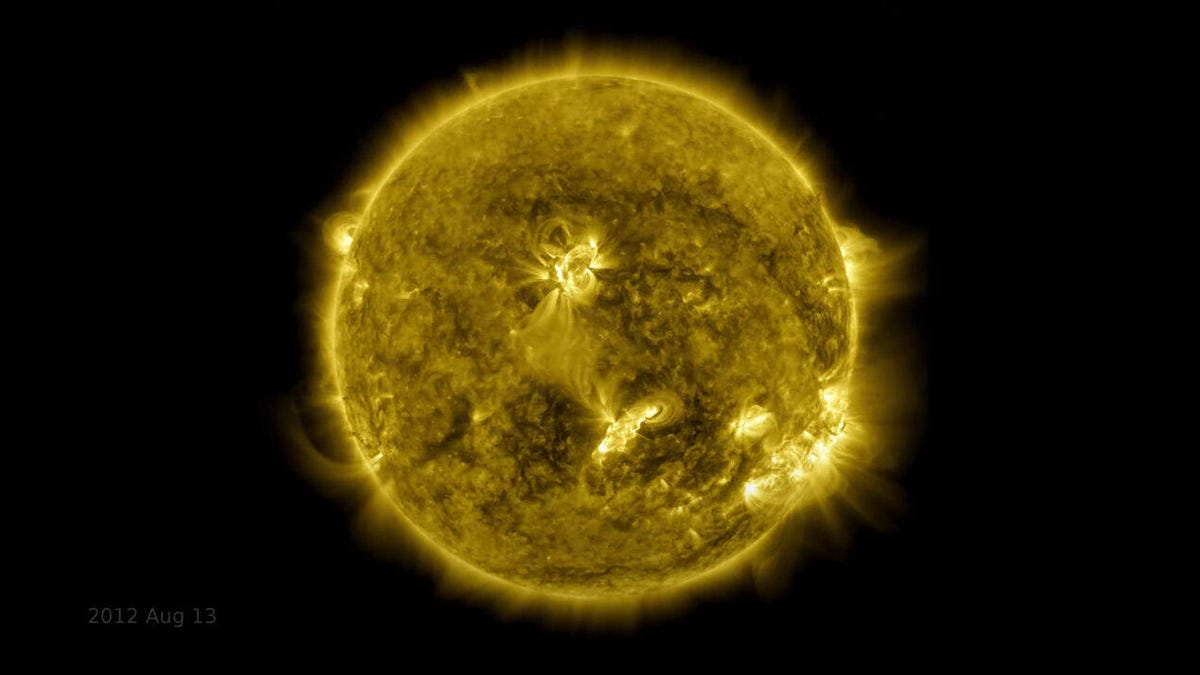NASA suspects sunquakes are coming from deep beneath the sun's surface
Shake, ripple and roll from below.

This is what the sun looked like to the SDO on August 13, 2012.
You've heard of earthquakes, and even marsquakes. Our sun also likes to get in on the shimmying action with sunquakes. NASA research is revealing more about these events and their mysterious origins.
"These earthquake-like events release acoustic energy in the form of waves that ripple along the sun's surface, like waves on a lake, in the minutes following a solar flare – an outburst of light, energy and material seen in the sun's outer atmosphere," NASA said in a statement on Monday.
Researchers originally thought sunquakes were fed by forces in the sun's outer atmosphere, but NASA's Solar Dynamics Observatory (SDO), a sun-watching spacecraft, turned up some eye-catching data when it watched the activity of a sunquake "with unusually sharp ripples emanating from a moderately strong solar flare" in 2011.
This sunquake movie shows the region of a July 30, 2011 sunquake on the left and the ripples of the quake on the right, 42 minutes after the associated solar flare occurred.
SDO's Helioseismic and Magnetic Imager instrument was able to track the sunquake's waves to a source 700 miles (1,130 kilometers) below the sun's surface. That discovery has turned ideas of sunquake origins upside-down.
A team of researchers published a study on the sunquake in The Astrophysical Journal Letters in late 2020. "The scientists still haven't identified exactly what mechanism actually causes sunquakes, though the results do provide the clue that their origins likely lurk beneath the surface," NASA said.
Researchers hope to gather more data on sunquakes to see if others have a similarly deep origin story to the 2011 event.
The sun has been a big focus of NASA and other agencies in recent years. We've seen unprecedented views of our host star and the Parker Solar Probe and Solar Orbiter spacecraft have been sending back new data as we seek to understand the workings of the sun and how it impacts our solar system and the Earth.

